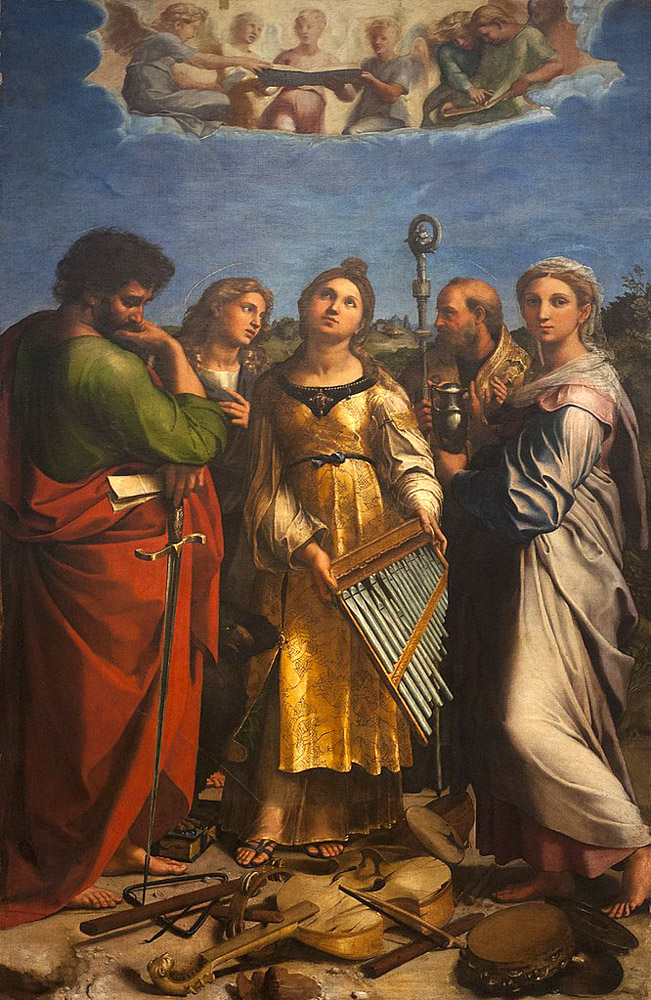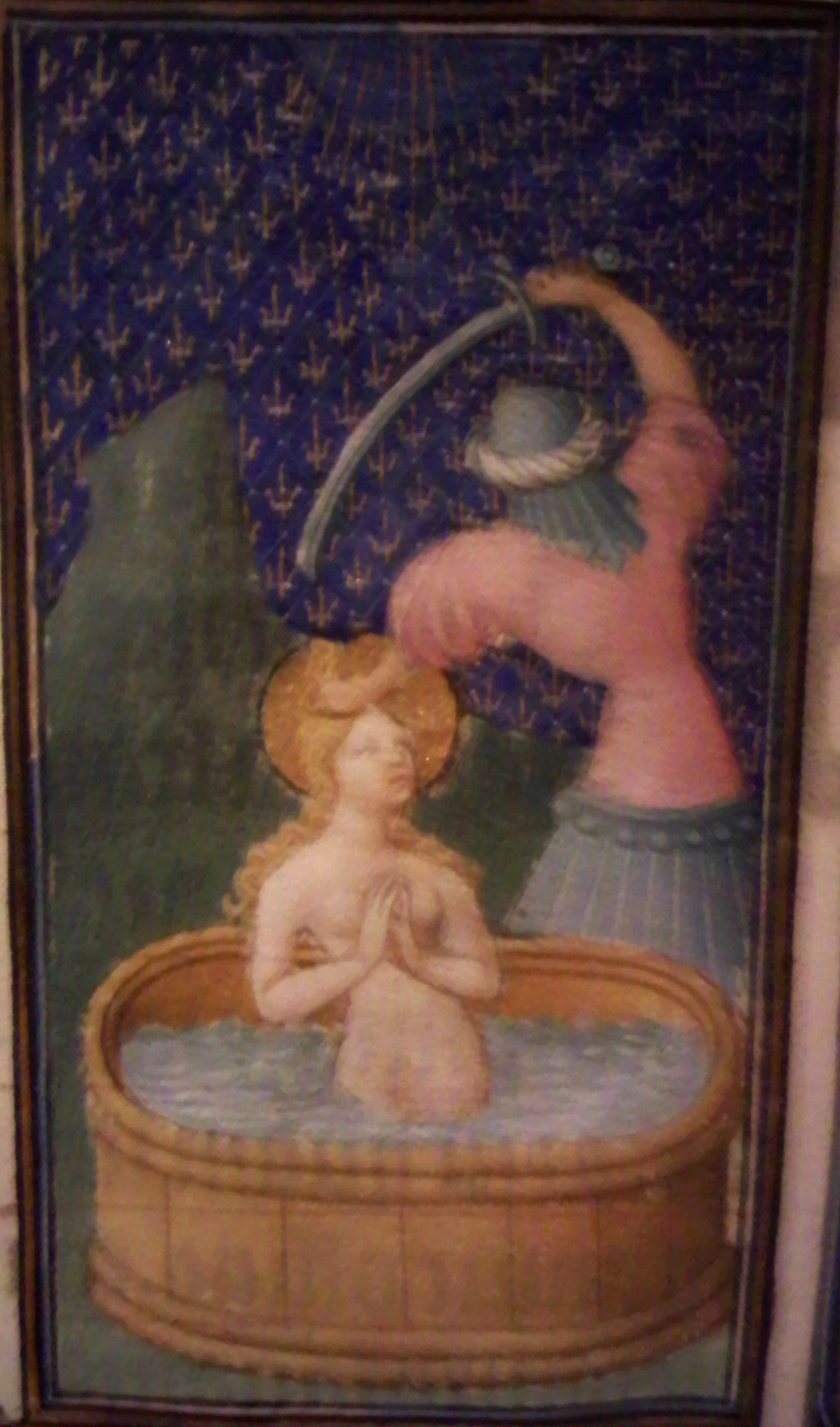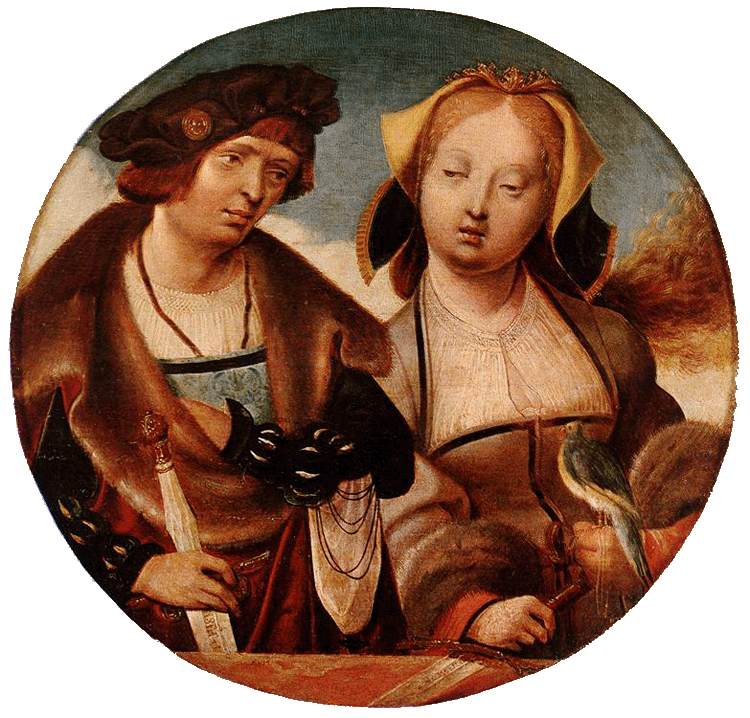While the musical instruments sounded, she sang in her heart to the Lord alone, saying, "Let my heart and my body be undefiled, O Lord, that I may not be confounded" (Ryan, II, 318).That night she confides her Christian faith to her new husband, Valerian. At first suspicious, Valerian converts and is baptized with his brother. When the provost of Rome learns of this he has both men executed. Then Cecilia herself is arrested, tried, and condemned to be burnt alive in a scalding bath. When the boiling water fails to harm her, the provost orders her beheaded. The executioner's strokes leave her half-alive for three days, but she uses the time to preach and distribute her wealth to the poor.
PORTRAITS
St. Cecilia appears in portraits as early as the 6th century in Ravenna and in Croatia. In these she is among other female saints who are made to look all but identical. By the ninth century her portrait has come to include a diminutive coronet, a reference to the crowns that an angel brought for her and Valerian after his baptism (image). It is seen again in this altarpiece from 1304 and continues to be a feature of her portraits through the centuries.
But St. Cecilia's most common attribute in medieval and later images is an organ. The earliest example that I have encountered is a statue that Verona's Castelvecchio Museum dates from the first half of the 14th century. By the 15th, the organ became all but universal in the portraits (example). Indeed, it was so fixed in Cecilian imagery that one legend that closely follows the Golden Legend nevertheless changed Voragine's "while the musical instruments sounded" to "while the organs sang."1 And by the 17th century Cecilia is actually at the keyboard playing an organ in this painting and in Dryden's "Song for St. Cecilia's Day."2
Occasionally in later centuries the saint may be pictured playing some other instrument (example).
Raphael's painting at right expresses St. Cecilia's disdain for earthly music played on instruments and her longing for heavenly song. Musical instruments lie broken at her feet as she gazes up toward angels singing from a choir book. Her heavenward gaze became a common feature in Renaissance portraits and continued into the nineteenth century, when the saint was adopted as a model of refined womanhood (example). Ironically, the prevalence of the organ as her attribute led to St. Cecilia's being adopted as the patron saint of music and musicians.
NARRATIVE IMAGES
The St. Cecilia Altarpiece mentioned above tells the story in eight panels. A 17th-century chapel dedicated to St. Cecilia in Rome also has frescoes by Domenichino tracing some of the episodes: the crowns, the trial, the distribution of goods to the poor, and Cecilia's death.
Prepared in 2014 by Richard Stracke, Emeritus Professor of English, Augusta University, revised 2015-10-18, 2017-02-17, 2020-08-22.
HOME PAGE

Raphael, The Ecstasy of St. Cecilia
(See the description page)

The Limbourg Brothers' Martyrdom of St. Cecilia (15th century) combines the bath episode with the beheading. (See the description page.)

In Engebrechtsz's St. Cecilia and her Fiancé Valerian (1518-20) the couple hold the swords with which they were executed. (See the description page.)
ATTRIBUTES
- Organ or other musical instrument
- Small coronet
MORE IMAGES
- Late 16th century: Cecilia's disdain for instrumental music is on display in Saraceni's Paradise.
- 1587-89: Workshop of Cesare Nebbia, Episodes from the life of St. Cecilia.
- 1679-85: In Tencalla's ceiling fresco in Passau Cathedral Cecilia plays the organ in Heaven.
DATES
- Feast day: November 22
- Various dates are given for Cecilia's life, and it is now impossible to know when she may have lived.
BIOGRAPHY
- Golden Legend #169: html or pdf
- Chaucer, The Second Nun's Prologue and Tale
- Bokenham, 141-156
- Cecilia's vita in The Roman Breviary: English translation, IV, 758-59; Latin original, 1105-1109
- The Early South English Legendary, 490-96
- Metaphrastes' Greek Life of Cecilia with Latin translation: MPG, CXVI, 163-80.
NOTES
1 Bokenham, 143.
2 "But bright Cecilia rais'd the wonder high'r:/When to her Organ vocal Breath was given," Dryden, "A Song for Saint Cecilia's Day," 51-52.
HOME PAGE